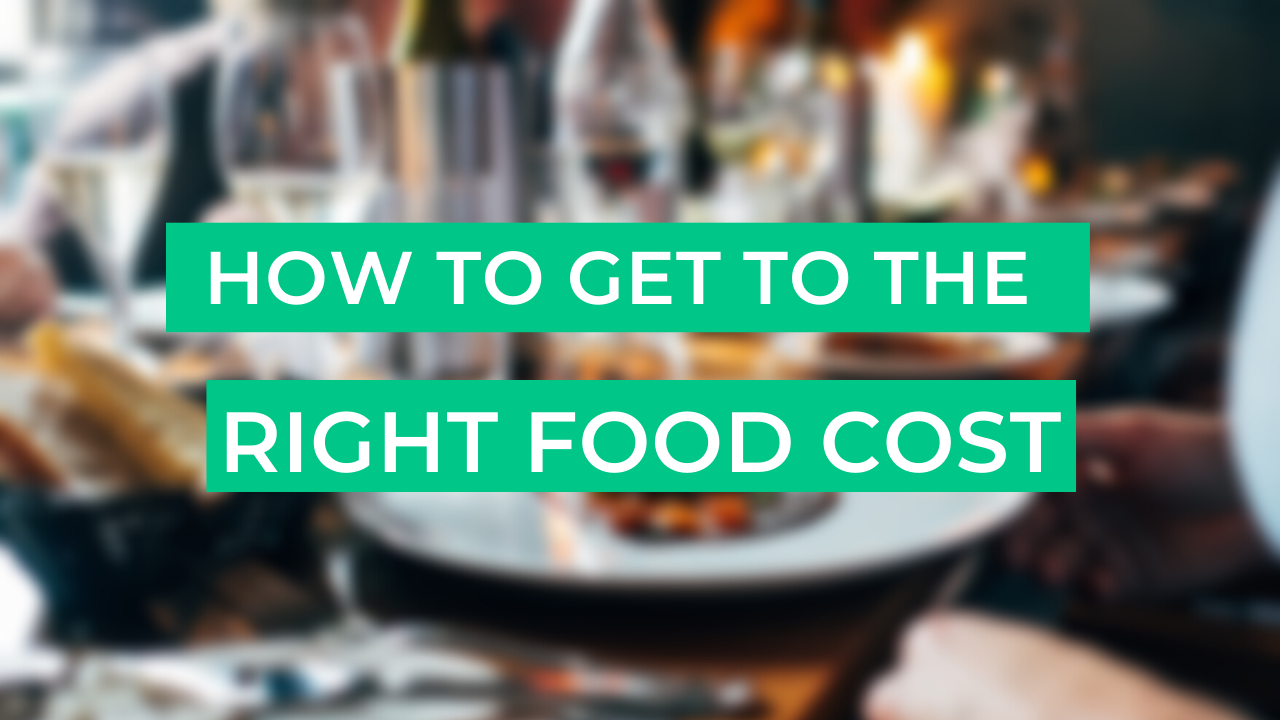There Is a Wrong Food Cost Formula?

Food cost, food cost, food costs keep going up. It is becoming a struggle to make money in our business, and now, with labor costs rising even faster, we’ve got to bring our food costs down. Watch this video, or continue reading below, to learn more about food costing and the food cost formula.
About the Right Food Cost Formula
If I were to ask you what your number one challenge in your restaurant is, you’d probably tell me labor, followed by food cost. I want to focus right now on food cost, why the food cost formula is so important, and why food costing accountability is a secret to changing how your restaurant operates.
So wait. There's a wrong food cost formula? So how do you bring your food cost down? Well, number one, you have to understand the food cost formula That’s beginning inventory + purchases - ending = use/sales = food cost. See how it requires inventory? What I worry about is that most restaurants don’t have time to take inventory.
I often hear, "It’s too hard." Boo-fricking-hoo. When you walk into your business and you walk into your cooler, and I ask you what you see on your shelves, if you tell me, "food," you’re wrong. The answer is money. Who’s money? Your money.
You cannot take your purchases divided by your sales in order to come up with your food cost, because one month you may have purchased food thinking your sales are going to be high, but sales were low. So you’ve got all this food you’ve bought but sales were lower than expected. If I use purchases divided by sales, then you've got a high, a falsely high, food cost. Then, the next month, because you're expecting lower sales, you have so much food on the shelves you don’t order so much. So you only order a little bit because you're going to use what’s on the shelves. Now you take purchases divided by sales and it looks like a falsely low food cost.
The only way to know your food cost is to know your inventory. Accurate inventories. Otherwise, you don’t have a right number. Then, you've got to make sure, if you do inventories, that you're using the right numbers. You have to have accurate shelf-to-sheet inventories so you can do inventory in under an hour. If it takes 3-4 hours, you're definitely not going to want to do it.
With shelf-to-sheet, you count the products the way you see them on the shelves, the way they’re priced. A case here, a bag here, an ounce here, and then batch recipes, five ounce portion bags and so on, in the order they appear so we have accurate and fast inventories.
You have to make sure you break up your purchases because it’s beginning inventory plus purchases. That means every invoice that comes into your building, whether you pay for it or not, is an invoice that is an expense that day. But, you've got to break it up. You have to make sure you’re only using the food and food cost, not janitorial, paper, everything that’s on that broadline distributor invoice doesn’t belong in your food cost, only the food. Then you've got to use, last but not least, the right numbers when it comes to sales. We need to use gross sales, not net sales. Gross sales the ring at the register, before you remove the discounts, not including the sales tax. So if you ring up a $10 burger, comp five dollars, ten dollars is gross sales. That is the number you use when it comes to measuring your costs of goods sold. That goes into the food cost formula.
Here’s the deal, I don’t care whether you use a calculator and pencil, a spreadsheet, or fancy software, when it comes to calculating your food cost, it’s garbage in, garbage out. You have to take inventories, you have to have the right numbers, and you have to calculate properly if you’re going to have any chance at knowing what your food cost number should be.
If you would like to learn more about the importance of systems and how to run a restaurant, read our free special report, Is Your Food Distributor Screwing You? 5 Things You Can Do Now to Lower Food Cost. Download it here. Be sure to visit my YouTube channel for more helpful restaurant management video tips.




